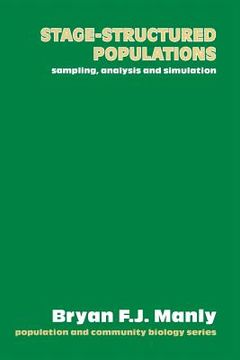Share
Stage-Structured Populations: Sampling, Analysis and Simulation (in English)
Bryan Manly
(Author)
·
Springer
· Paperback
Stage-Structured Populations: Sampling, Analysis and Simulation (in English) - Manly, Bryan
$ 52.09
$ 54.99
You save: $ 2.90
Choose the list to add your product or create one New List
✓ Product added successfully to the Wishlist.
Go to My WishlistsIt will be shipped from our warehouse between
Monday, June 03 and
Tuesday, June 04.
You will receive it anywhere in United States between 1 and 3 business days after shipment.
Synopsis "Stage-Structured Populations: Sampling, Analysis and Simulation (in English)"
This book provides a review of methods for obtaining and analysing data from stage-structured biological populations. The topics covered are sam- pling designs (Chapter 2), the estimation of parameters by maximum likelihood (Chapter 3), the analysis of sample counts of the numbers cif individuals in different stages at different times (Chapters 4 and 5), the analysis of data using Leslie matrix types of model (Chapter 6) and key factor analysis (Chapter 7). There is also some discussion of the approaches to modelling and estimation that have been used in five studies of particular populations (Chapter 8). There is a large literature on the modelling of biological populations, and a multitude of different approaches have been used in this area. The various approaches can be classified in different ways (Southwood, 1978, ch. 12), but for the purposes of this book it is convenient to think of the three categories mathematical, statistical and predictive modelling. Mathematical modelling is concerned largely with developing models that capture the most important qualitative features of population dynamics. In this case, the models that are developed do not have to be compared with data from natural populations. As representations of idealized systems, they can be quite informative in showing the effects of changing parameters, indicating what factors are most important in promoting stability, and so on.
- 0% (0)
- 0% (0)
- 0% (0)
- 0% (0)
- 0% (0)
All books in our catalog are Original.
The book is written in English.
The binding of this edition is Paperback.
✓ Producto agregado correctamente al carro, Ir a Pagar.

